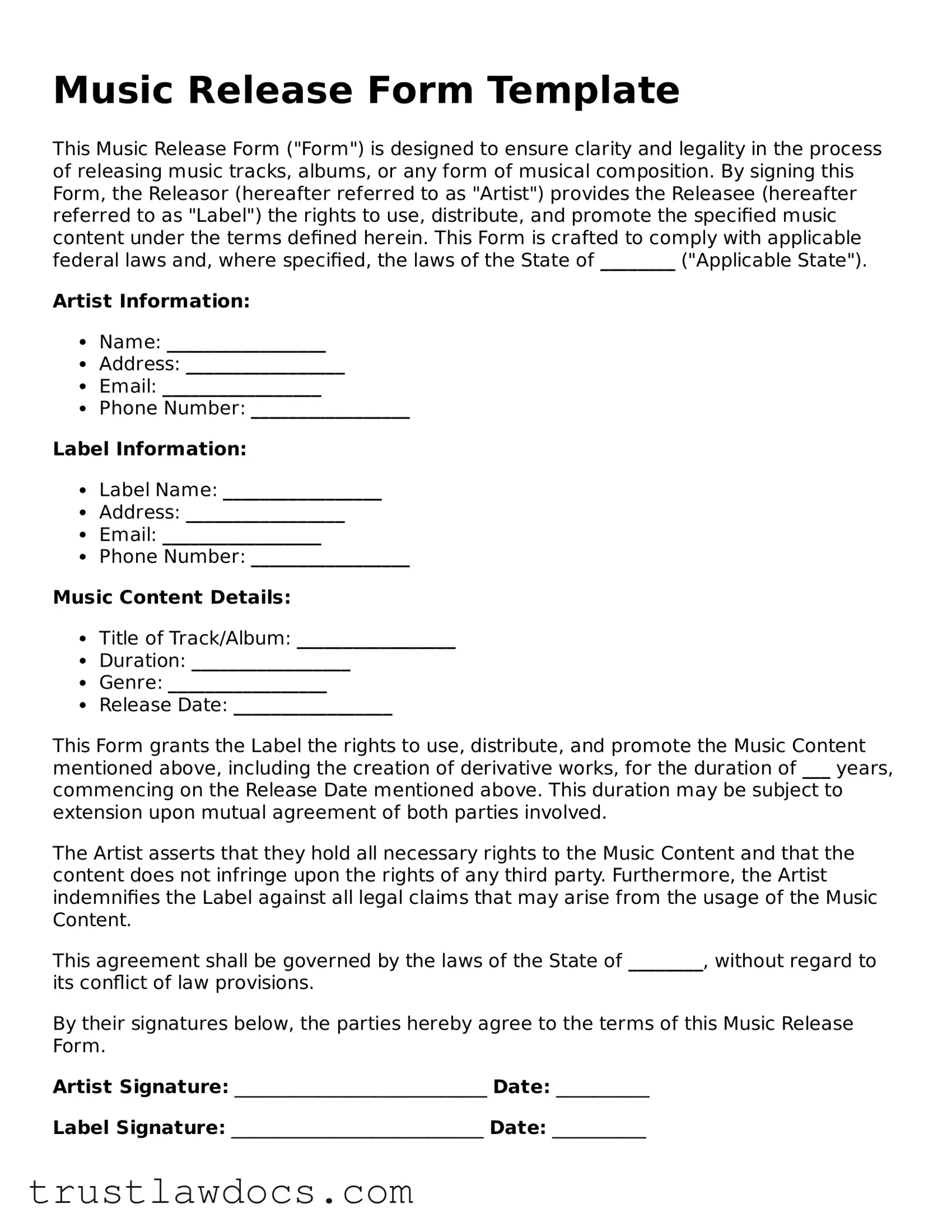A Photo Release Form shares similarities with a Music Release Form, as both are designed to obtain consent for the use of creative works. In a Photo Release Form, the photographer or the entity obtaining the consent is granted the right to use, publish, or reproduce images of individuals, places, or items. Much like a Music Release Form, which allows for the legal use of musical works, this document ensures that the person or entity obtaining the rights can utilize the photographs for commercial or promotional purposes, with the consent of the subjects or owners clearly documented.
The Model Release Form operates on a similar principle to the Music Release Form, with its focus being primarily on individuals who appear in photography, video, or other media. By signing a Model Release Form, the model grants permission to the photographer or videographer to use their likeness for commercial or artistic purposes. This parallels the license given in Music Release Forms, where musicians or copyright holders give their consent for their music to be used under specified conditions, safeguarding the rights and setting clear terms for usage.
An Intellectual Property (IP) Release Form is another document that has much in common with a Music Release Form. It encompasses a broader scope of creative works, including inventions, trademarks, and copyrighted material, beyond just music or images. This form gives someone else permission to use the intellectual property in question while outlining the terms of this usage. Like a Music Release Form, it’s critical for protecting the creator’s rights and ensuring that the usage of the content is controlled and agreed upon by all parties involved.
The Location Release Form is essential when the use of a particular tothe respective owners. Similar to the Music Release Form, which documents the agreement between the music copyright holder and the user, the Location Release Form ensures that the terms of using someone’s property for creative endeavors are clearly stated and agreed upon, including aspects such as duration, compensation, and specific use cases.
A Copyright Assignment Agreement is another critical document, closely related to a Music Release Form because it involves the transfer of copyright from one party to another. This agreement is more definitive than a release form, as it typically entails a permanent transfer of all rights to a work, whether it's music, literary, or visual art. The Music Release Form might grant temporary or conditional use rights, while a Copyright Assignment Agreement ensures the receiving party gains full, exclusive ownership of the content, subject to the terms outlined in the assignment.
An End User License Agreement (EULA) shares similarities with a Music Release Form in the digital realm, especially concerning software and digital content. An EULA grants the user the right to use software, digital music, or other online content, often setting limitations on how many devices can use the product or restricting the making of unauthorized copies. Like a Music Release Form, it specifies the scope of allowed usage but is unique to digital content and specifically targets end users rather than licensees for broader commercial use.
The Artist Agreement Contract is akin to the Music Release Form, particularly for live performances or recording sessions. This contract outlines the terms between an artist and another party, such as a record label, promoter, or venue. It covers various aspects such as performance expectations, compensation, and rights to the music performed or recorded. While it deals with live performances and recordings rather than the use of already created music, it’s similarly essential for protecting the interests of the artist and ensuring clear, mutual agreements on the use of music.
